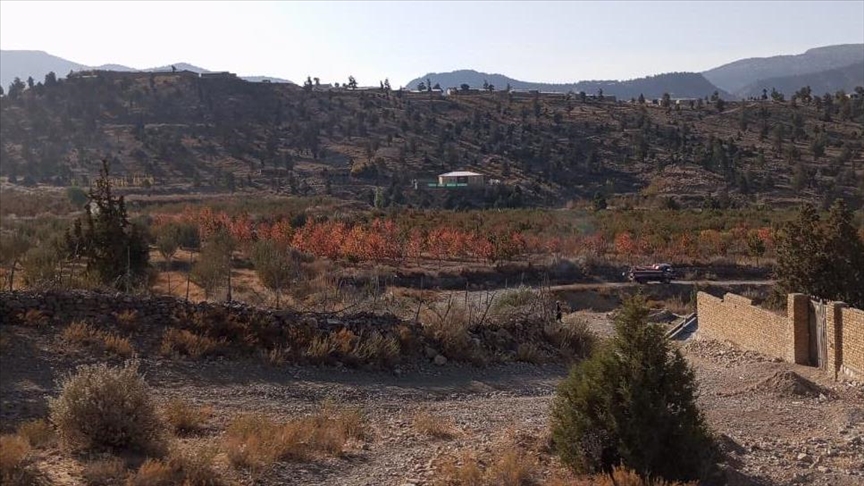It takes slightly over three hours to reach the serene Ziarat valley from Quetta, the capital of Pakistan’s southwestern Balochistan province, where stands one of the world’s oldest and largest juniper forest.
As the road swerves through mighty mountains, there is a sudden change in the atmosphere as the wind starts becoming cooler and crisper, and the rugged terrain gives way to greenery.
The mountains are covered in clusters of juniper trees, offering a remarkable and soothing sight to sore eyes.
Junipers and Ziarat, for locals, are one.
But this ecological treasure is facing a slew of lurking threats, ranging from climate change ravages to growing demand for land, and from human habitation to compromised regeneration.
Located at a height ranging from 1,181 to 3,488 meters (3,874 to 11,443 feet) above sea level, and spanning over 247,000 acres, Ziarat has the largest contiguous natural juniper forest in Pakistan and the second-largest of its kind in the world.
It has some of the world’s oldest trees dating back to between 1,500 and 2,500 years.
The forest is also home to several endangered wildlife species, including the Himalayan black bear and the markhor wild goat.
It was added to the World Network of Biosphere Reserves by UNESCO in 2013, though the global body, according to Balochistan Forest Department, has not provided any funds for its protection ever since.
Economy over ecology
Multiple anthropological factors, according to ecologists, have contributed to the degradation of the forest in recent years.
Demand for land for both agriculture and human settlements has increased exponentially over the past two decades, significantly reducing the forest cover, according to Rafi-ul-Haq, a Karachi-based ecologist.
Speaking to Anadolu, Haq, who has been associated with projects related to juniper forests, cited climate change as another potential threat to the existence of the millennia-old forest.
“The juniper ecosystem is known to withstand the microclimatic brunt, but the current extent of climate change poses an extra burden. Potentially, a compromise in the resilience of this ecosystem seems imminent in recent years,” he explained.
Also, he further said, a significant area of the forest has been transformed into farmlands and orchards over recent decades.
“These orchards and farmlands have not only reduced the forest cover, but they are also sharing the water, minerals and other natural resources with the juniper ecosystem, which would otherwise get all of it,” Haq said, adding that this affects the lifespan and strength of juniper trees.
Sharing a similar view, Hamid Sarfraz, an Islamabad-based environmentalist, observed that an improved road network over the past decade has prompted locals to convert forest land into cherry and grapes orchards, as they can now easily transport their produce to other cities.
Recent climate-related changes, he added, have also improved wheat cultivation conditions in Ziarat.
“Keeping its ecological value aside, juniper cannot benefit them (locals). But the land juniper trees are covering can benefit them very well. That’s why the agriculture land area there is increasing day by day,” he told Anadolu.
“Simply put, economy has superseded ecology and natural beauty.”
Lack of data
Umar Farooq, a conservator with Balochistan’s Forest Department and a native of Ziarat, said there are no exact estimates of the forest cover lost over the years, mainly because there have not been proper surveys in decades.
“What I can tell you on the basis of my and my father’s observation is that huge portions of the forest, which in our childhood used to be covered in thick clusters of juniper trees, are nowadays completely bare,” he told Anadolu.
The cold Ziarat valley has long been facing electricity and gas shortages, compelling people to cut trees for domestic use, particularly in winter.
According to locals, the city gets electricity for eight to 10 hours and gas for only a few hours a day, which is quite insufficient to meet their heating and cooking requirements, especially on the bitterly cold nights.
“These trees are like a part of us. But we have no other choice. It’s impossible to survive in the winters when there is no power and gas for heating,” Abdul Waseh, a local shopkeeper, told Anadolu.
Endorsing his view, Farooq said that until locals are not provided an alternative in terms of both economy and civic facilities, they will keep cutting down trees.
“We have to be realistic about it. How can we stop this phenomenon when only 30% of the people here have gas facilities to keep themselves warm in minus 23 degrees Celsius (minus 9.4 degrees Fahrenheit),” he said.
“Whatever forest area is protected, it’s because of the forest department, and without any external assistance,” he added.
Compromised regeneration
Haq, the ecologist, said there is a huge gap between the number of trees being uprooted or chopped down, and the efforts for regeneration, mainly because of the treacherous terrain.
The slow growth rate of junipers is also a major issue in maintaining the status of the ecosystem.
“The natural regeneration of juniper tree is dependent on the climatic regime and assisted reforestation techniques have many difficulties, mainly influenced by the climatic, social and traditional composition of the mountainous nature of forest terrain,” he explained.
“Let’s say if trees are cut down or uprooted (because of flash floods or other natural disasters), the chances of replenishment are disproportionate and there is also the very slow growth rate of junipers.”
Farooq, the conservator, however, disagreed with Haq’s view, saying that regeneration is actually higher than the number of trees being felled.
“But why these trees are not seen or not able to reach maturity is because of grazing,” he said referring to the presence of livestock, a key source of livelihood for locals.
A local tradition is also adding to the problems as people cut down juniper branches to cover graves.
However, Farooq said that has slightly reduced in recent years with the help of younger religious scholars.
Another additional burden on the juniper forest ecosystem is coming from the reduction in migratory trends of the local population.
Until recently, many locals would move to warmer areas of Balochistan in winter and return in the summer, reflecting the agropastoral characteristic of the area’s ecosystem.
However, improved communication networks and increasing permanent settlements have disrupted this centuries-old tradition, according to Haq.
“That (seasonal migration) meant less cutting of trees and human intervention for at least half a year. But the gradual decrease in temporary migration has added to an increasing burden on the forest,” he said.
Source : aa















